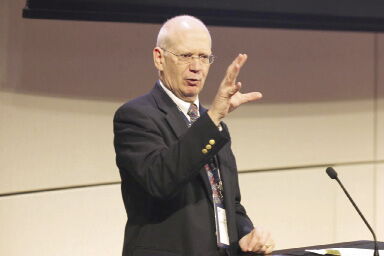Processing Your Payment
Please do not leave this page until complete. This can take a few moments.
-
News
-
Editions
-
- Lists
-
Viewpoints
-
HBJ Events
-
Event Info
- 2024 Economic Outlook Webinar Presented by: NBT Bank
- Best Places to Work in Connecticut 2024
- Top 25 Women In Business Awards 2024
- Connecticut's Family Business Awards 2024
- What's Your Story? A Small Business Giveaway 2024 Presented By: Torrington Savings Bank
- 40 Under Forty Awards 2024
- C-Suite and Lifetime Achievement Awards 2024
- Connecticut's Health Care Heroes Awards 2024
-
-
Business Calendar
-
Custom Content
- News
-
Editions
View Digital Editions
Biweekly Issues
- April 29, 2024
- April 15, 2024
- April 1, 2024
- March 18, 2024
- March 4, 2024
- February 19, 2024
- February 5, 2024
- January 22, 2024
- January 8, 2024
- + More
Special Editions
- Lists
- Viewpoints
-
HBJ Events
Event Info
- View all Events
- 2024 Economic Outlook Webinar Presented by: NBT Bank
- Best Places to Work in Connecticut 2024
- Top 25 Women In Business Awards 2024
- Connecticut's Family Business Awards 2024
- What's Your Story? A Small Business Giveaway 2024 Presented By: Torrington Savings Bank
- 40 Under Forty Awards 2024
- C-Suite and Lifetime Achievement Awards 2024
- Connecticut's Health Care Heroes Awards 2024
Award Honorees
- Business Calendar
- Custom Content
Yale’s Soderstrom, an architect of New Haven’s bioscience ecosystem, calls it a career
 Jon Soderstrom is ending a 25-year run overseeing Yale’s Office of Cooperative Research.
Jon Soderstrom is ending a 25-year run overseeing Yale’s Office of Cooperative Research.
Jon Soderstrom has spent the last quarter-century waiting for Greater New Haven’s bioscience industry to catch up with his vision.
Since being recruited to lead Yale’s Office of Cooperative Research in 1996, Soderstrom has played a leading role in building an ecosystem that he hoped would one day put New Haven on the map as a nationally recognized biotech hub.
It appears to him that moment is about to arrive. Consider the evidence, he said, ticking off a list of recent headlines.
• A $93 million IPO for rare disease biotech Rallybio.
• AstraZeneca’s eye-popping $39 billion buyout of Alexion Pharmaceuticals.
• The Wall Street debut of two medtech startups launched by bioscience entrepreneur Jonathan Rothberg.
• Pfizer’s $1 billion investment in Arvinas’ experimental breast cancer drug.
• A developer breaking ground on a new downtown bioscience tower.
“People used to laugh and say ‘How are you going to do all this stuff?’ ” Soderstrom said in a recent Zoom interview from his home office in Madison. “And now it’s actually happening.”
On the cusp
By many accounts, New Haven’s growing bioscience industry is on the cusp of a breakthrough. And industry leaders agree none of it would be happening without the groundwork laid by Soderstrom, who is retiring from Yale at the end of this year.
“We would not have the industry we have today without Jon,” said Dawn Hocevar, CEO of the biotech industry advocacy organization BioCT. “His ability to work within Yale and help the researchers commercialize their intellectual property has been outstanding. He understands the industry extremely well, and he’s extremely well-connected to the venture world.”
Soderstrom’s departure ends a 25-year run as the university’s head technology transfer expert, where he led Yale’s efforts to boost its profile as a leader of global research by helping faculty spin successful ventures out of their academic work.
He explained that faculty are eager to see their research make a difference in people’s lives. But they aren’t trained in the skills needed to make that happen, such as patenting their research, pitching their ideas to investors, raising capital or launching a company.
“Our job is to help them achieve that, and then step aside and try to stay in the background,” he said.
When Yale announced Soderstrom’s departure last June, Vice Provost for Research Michael Crair credited him with raising the stature of the Office of Cooperative Research not only as a leader among university tech transfer programs, but as an engine of economic development for the region.
He noted that under Soderstrom’s watch, more than 75 Yale spinouts with over $2 billion in venture capital and another $7 billion in public equity financing have taken root in and around the Elm City.
Another of Soderstrom’s accomplishments was helping the cooperative research office grow the number of drugs developed and managed by the university, a pipeline that now includes more than 50 different pharmaceutical products.
Asked why he’s leaving now, Soderstrom quips, “I’m old. And I’m not getting any younger. It’s been 25 years and I wasn’t really expecting to be here this long. It’s always best to go out on top.”
Inventor lineage
Soderstrom grew up around inventors and innovators. His father, an engineer, designed the package handling system for the original FedEx facility in Memphis as well as more than two dozen systems for Walmart’s regional warehouse network across the country.
As such, he worked closely with some of the greatest entrepreneurs of the 20th century, including FedEx founder and CEO Fred Smith, who took the elder Soderstrom, a fellow military pilot, for a whirl on the first FedEx jet.
“My dad designed things like pick-and-sort robots — all those kinds of things that you hear about now at Amazon — he helped create those things years and years ago, so I grew up hearing all these stories,” Soderstrom said.
After earning his doctorate from Northwestern University, Soderstrom launched his career leading technology commercialization for Martin Marietta Energy System. That led to a job heading up business development for the Oak Ridge National Laboratory in Tennessee, where he was working in 1996 when Yale approached him.
Soderstrom’s mentor was Greg Gardiner, a retired Pfizer R&D strategist Yale hired to temporarily lead the Office of Cooperative Research after its original director left for health reasons. As Soderstrom tells it, Gardiner took the job on the condition that he would only stay long enough to help identify and train a successor.
“And whatever possessed him, I was that person,” said Soderstrom. “He said, ‘I’ll teach you the biotech pharmaceutical industry, and then when you learn it, I’ll step aside. And that’s what he did.”
When Soderstrom first arrived, the program was small and had produced few real success stories. The initial goal of three to four venture-backed startups a year seemed “extraordinarily wild” at the time, he said, but soon the office was spinning out around five startups a year. In recent years, it’s been averaging 10 or more.
“In that sense, we’ve been wildly successful. But we knew that it was going to take a lot of effort in terms of creating an innovation ecosystem that would support that kind of activity,” and keep those companies in New Haven, he said.
In the early years, he worked closely with Yale’s now-retired vice president for New Haven and state affairs Bruce Alexander on programs to boost the startup culture at Yale and to connect faculty and students with successful entrepreneurs and investors. Another goal was addressing the city’s lack of lab space with projects like transforming the former Southern New England Telephone building into a biotech center.
He said the recent flurry of activity in the bioscience space reflects a maturation of that ecosystem, which he described as a collective achievement on the part of scientists, investors, entrepreneurs and many others. Asked about his proudest accomplishment, Soderstrom points to his team at the cooperative research office.
“My job was to help create the vision and make sure they had the resources to operate,” he said. “They’re the ones who are actually doing the hard work to make it happen.”
Keep building
Former New Haven Economic Development Director Matthew Nemerson applauded Soderstrom’s ability to navigate the vastly different cultures of a large university, the scientific community, venture world, and government. Even when there were setbacks over the years, he said Soderstrom never lost sight of the big picture.
That kind of persistence is crucial in the bioscience arena, where failures are frequent and successes can take decades to materialize, Nemerson said. “You need somebody like Jon who can keep fighting, keep building and keep brushing off the disappointments.”
Soderstrom said the payoff comes when his team can share in the victories, such as joining companies on the stock exchange floor when they go public, or watching a drug that began in a Yale lab become a blockbuster that helps real people.
“That’s pretty exciting stuff. It’ll keep you going for a while,” he said.
Soderstrom will remain at Yale in an advisory role through the end of the year while the university conducts a national search for his successor.
And after that? Soderstrom said he isn’t sure, but he plans to remain engaged in New Haven’s biotech scene in some capacity.
One project he’ll continue to keep tabs on is a new Yale-backed BioLabs incubator set to open in the new bioscience building under construction at 101 College St. Soderstrom said he feels personally invested in making sure it becomes an industry model. As for the industry itself, he predicts more big headlines are ahead.
“We’ve always talked about being at that inflection point where it’s going to have amazing, exponential growth. And I think that we’re there. We’re at the point now where it’s sustainable,” said Soderstrom. “In all my years here this is the best it's ever been. We need to capture [the opportunity]. We can’t let it get away from us.”

2022 Giving Guide
This special edition informs and connects businesses with nonprofit organizations that are aligned with what they care about. Each nonprofit profile provides a crisp snapshot of the organization’s mission, goals, area of service, giving and volunteer opportunities and board leadership.
Learn more
Subscribe
Hartford Business Journal provides the top coverage of news, trends, data, politics and personalities of the area’s business community. Get the news and information you need from the award-winning writers at HBJ. Don’t miss out - subscribe today.
Subscribe
2024 Book of Lists
Delivering Vital Marketplace Content and Context to Senior Decision Makers Throughout Greater Hartford and the State ... All Year Long!
Read Here-
2022 Giving Guide
This special edition informs and connects businesses with nonprofit organizations that are aligned with what they care about. Each nonprofit profile provides a crisp snapshot of the organization’s mission, goals, area of service, giving and volunteer opportunities and board leadership.
-
Subscribe
Hartford Business Journal provides the top coverage of news, trends, data, politics and personalities of the area’s business community. Get the news and information you need from the award-winning writers at HBJ. Don’t miss out - subscribe today.
-
2024 Book of Lists
Delivering Vital Marketplace Content and Context to Senior Decision Makers Throughout Greater Hartford and the State ... All Year Long!
ABOUT
ADVERTISE
NEW ENGLAND BUSINESS MEDIA SITES
No articles left
Get access now
In order to use this feature, we need some information from you. You can also login or register for a free account.
By clicking submit you are agreeing to our cookie usage and Privacy Policy
Already have an account? Login
Already have an account? Login
Want to create an account? Register
Get access now
In order to use this feature, we need some information from you. You can also login or register for a free account.
By clicking submit you are agreeing to our cookie usage and Privacy Policy
Already have an account? Login
Already have an account? Login
Want to create an account? Register






0 Comments